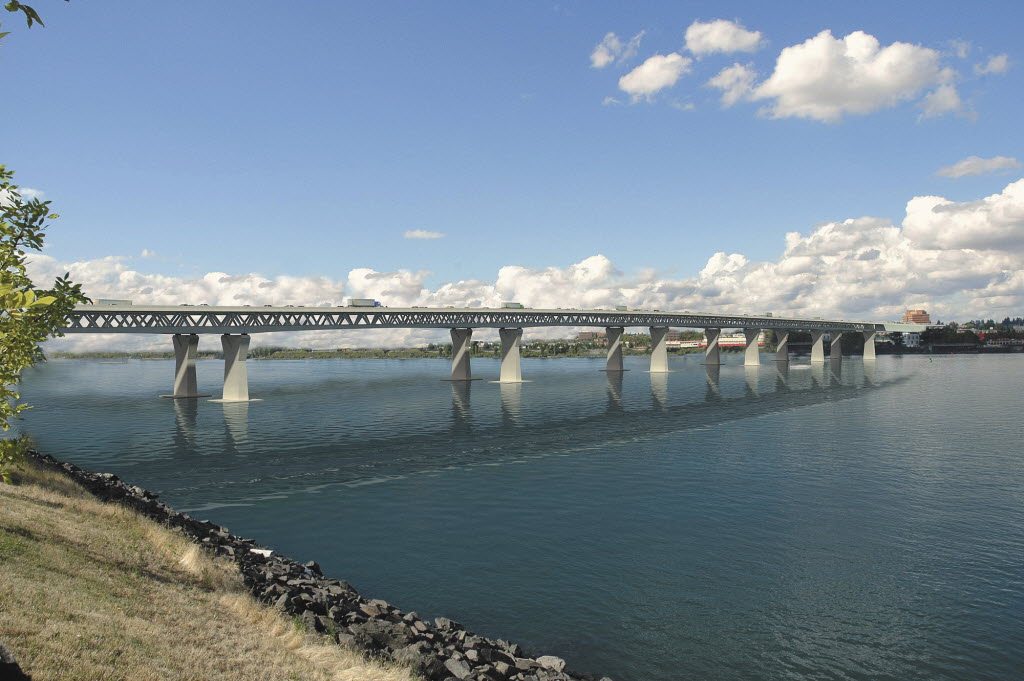Two down, two to go.
The C-Tran Board of Directors on Tuesday approved a draft impact statement for the Columbia River Crossing, allowing C-Tran Executive Director Jeff Hamm to sign the voluminous document now making the rounds of local government.
The Southwest Washington Regional Transportation Council approved the CRC Final Environmental Impact Statement last week. After C-Tran’s unanimous vote, that leaves two other local agencies — Oregon’s regional government for the Portland area, Metro, and transit agency TriMet — yet to approve it. The Metro Council will consider it Thursday.
The document lays out detailed plans and finances for the effort to build a new Interstate 5 Bridge between Vancouver and Portland, rebuild the freeway on both sides of the river and extend Portland’s light rail system into Vancouver. The project is estimated to cost $3.1 billion to $3.5 billion, though that number has been a moving target as funding assumptions and the project’s scale have come into question recently.
C-Tran’s approval didn’t come with any formal statements or changes. But board members did raise some concerns about funding, particularly through tolling.
CRC planners have said there is a possibility of “precompletion” tolling to collect money for the project sooner. That is, drivers would pay a toll to cross the existing I-5 Bridge that’s spanned the Columbia River for decades, before the new bridge is open.
“The concept of pre-completion tolling, I, personally, have some heartburn with,” said Vancouver Mayor Tim Leavitt, one of nine C-Tran board members.
Leavitt suggested exploring the idea of tolling onramps to the new system south of the actual bridge. That could collect revenue from Oregonians who will use and benefit from the new infrastructure connected to the project — in the Jantzen Beach area, for example — without crossing the river, he said.
Kris Strickler, deputy director of the CRC, noted that none of the financial plans in the impact statement is final. Nor is the C-Tran board’s vote a formal endorsement of the project, or any aspect of it. The document must also go through the Washington and Oregon departments of transportation before it reaches federal authorities.
Clearing the air
As the campaign surrounding this November’s Proposition 1 takes off, the board aimed to remove any doubt as to its purpose: The proposed 0.2 percent sales tax increase would pay only for maintaining existing bus service, and nothing else. Not light rail. Period.
“I want to make it crystal clear,” said Clark County Commissioner Marc Boldt, the C-Tran board chairman.
Boldt introduced an unplanned resolution reiterating a statement that board members and C-Tran officials have said for months. The policy statement spells it out in writing that revenue from the sales tax or reserves “will not be used to fund any aspect of the CRC Project.” The resolution also states that “no CRC-related expenditure will materially result in a reduction to current transit service levels.”
Boldt said after the meeting he brought the resolution to dispel a sentiment held by some Proposition 1 opponents that the November vote could fund light rail.
“When we pass a bus measure, it’s for buses,” Boldt said. “It’s not for light rail.”
C-Tran plans a separate sales tax vote in 2012, which would pay for the operation of light rail and a proposed bus rapid transit system.
Eric Florip: 360-735-4541 or eric.florip@columbian.com.




